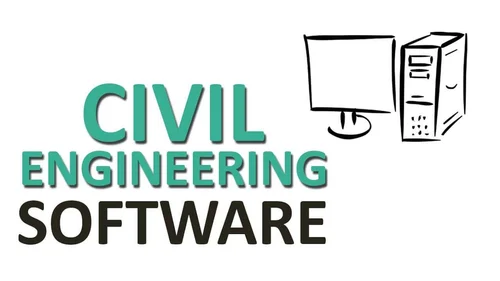Introduction:
In the realm of civil engineering, the advent of technology has ushered in a new era of efficiency, precision, and innovation. Gone are the days of relying solely on manual calculations and hand-drawn sketches. Today, civil engineers harness the power of cutting-edge software to streamline their workflows, enhance project management, and optimize designs. In this article, we’ll delve into the world of civil engineering software, exploring the top five tools that have become indispensable in the industry.
Autodesk Civil 3D:
At the forefront of civil engineering software stands Autodesk Civil 3D, a comprehensive solution tailored specifically for civil infrastructure projects. This powerful software combines design and documentation capabilities with intelligent, dynamic modeling functionalities. With Autodesk Civil 3D, engineers can create detailed 3D models of roads, land development, and pipelines, enabling accurate analysis and visualization of complex projects. From conceptual design to construction documentation, this software streamlines workflows and enhances collaboration among project stakeholders.
Bentley MicroStation:
Bentley MicroStation is another leading software in the field of civil engineering, renowned for its versatility and advanced modeling tools. Designed to support the entire project lifecycle, MicroStation empowers engineers to create precise 2D and 3D models, perform rigorous analysis, and generate detailed documentation. What sets MicroStation apart is its interoperability with other software applications, allowing seamless integration with various design and analysis tools. Whether it’s transportation infrastructure, environmental projects, or urban development, Bentley MicroStation provides the tools necessary to bring ambitious visions to life.

ESRI ArcGIS:
In the realm of geographic information systems (GIS), ESRI ArcGIS stands as a cornerstone software for civil engineers. ArcGIS offers a robust suite of tools for spatial analysis, mapping, and data visualization, making it an indispensable tool for infrastructure planning and management. Civil engineers leverage ArcGIS to analyze terrain characteristics, assess environmental impacts, and optimize site selection for construction projects. Moreover, ArcGIS facilitates effective communication and decision-making by providing intuitive maps and interactive dashboards that convey complex spatial information with clarity and precision.
SAP2000:
Structural analysis and design are fundamental aspects of civil engineering, and SAP2000 is a software package. That excels in this domain. Developed by Computers and Structures, Inc. (CSI), SAP2000 offers a comprehensive suite of tools for static and dynamic analysis of structures, including buildings, bridges, dams, and towers. With its advanced finite element analysis capabilities. SAP2000 enables engineers to simulate real-world behavior, assess structural integrity, and optimize designs for performance and safety. Whether it’s linear or nonlinear analysis, seismic evaluation, or code-based design. SAP2000 provides the tools necessary to ensure structural robustness and resilience.
AutoCAD Civil 3D:
AutoCAD Civil 3D, another offering from Autodesk, is a versatile software solution tailored specifically for civil engineering projects. Combining the power of AutoCAD with specialized tools for civil infrastructure design and documentation. Civil 3D offers a comprehensive platform for creating, analyzing, and documenting engineering projects. With its dynamic modeling capabilities and integrated workflows. Civil 3D enables engineers to design transportation networks, land development projects, and utility systems with precision and efficiency. Moreover, its interoperability with other Autodesk products facilitates seamless collaboration and data exchange throughout. The project lifecycle.
Read Also: AWC Software: A Comprehensive Review
Conclusion:
In conclusion, civil engineering software has revolutionized the way infrastructure projects are conceptualized, designed, and executed. From the initial stages of planning and analysis to the final documentation and construction, software tools play a pivotal role in enhancing efficiency. Accuracy, and innovation in the field of civil engineering. The top five civil engineering software packages discussed in this article represent the pinnacle of technological advancement in the industry. Providing engineers with the tools they need to tackle the most complex challenges and bring their visions to life. Whether it’s Autodesk Civil 3D, Bentley MicroStation. ESRI ArcGIS, SAP2000, or AutoCAD Civil 3D. These software solutions empower civil engineers to push. The boundaries of possibility and shape the world around us.





